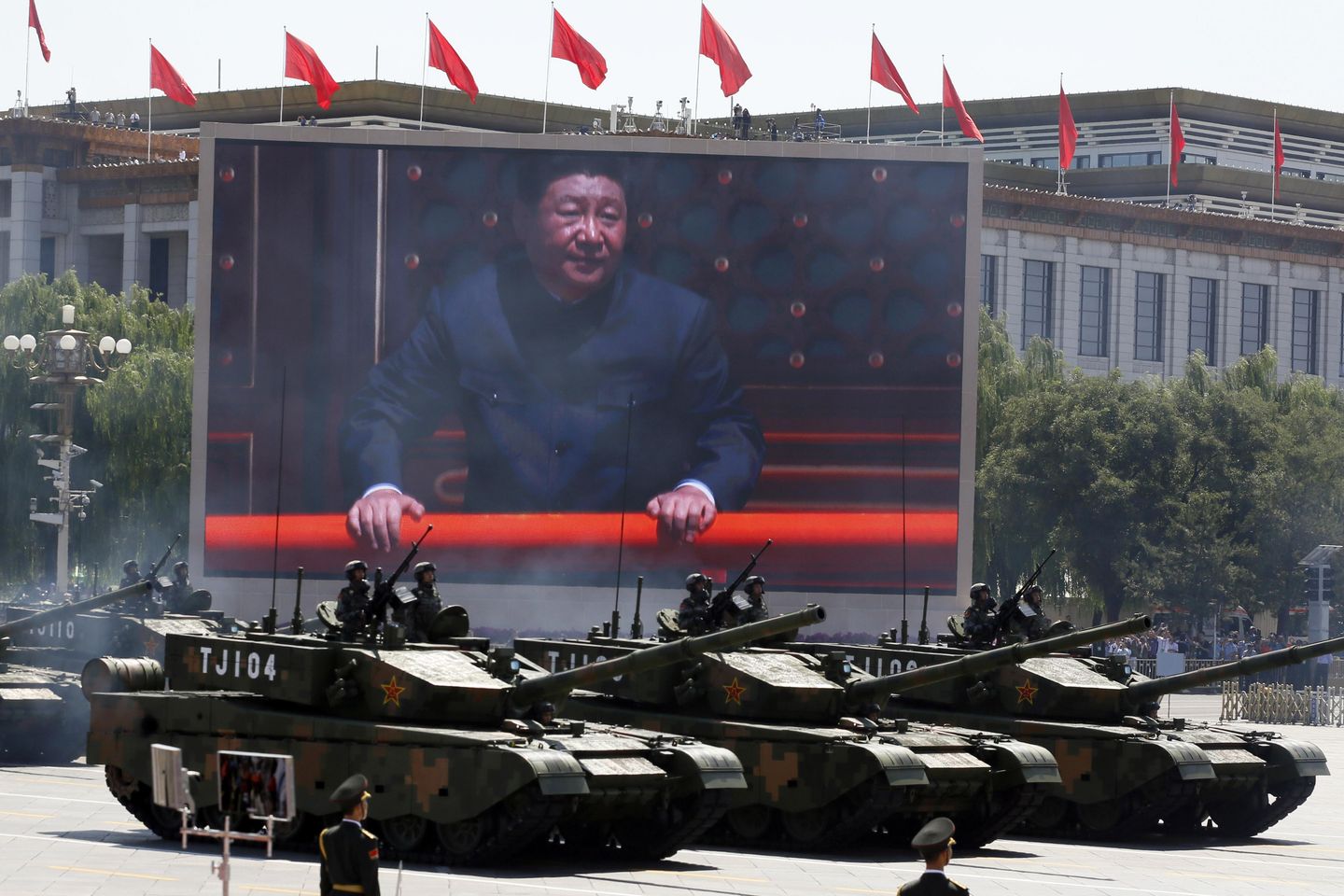
The unprecedented long-range bombing strike by the U.S. on Iran’s nuclear plants, including sending decoy B-2 bombers to Guam, had the secondary impact of bolstering deterrence against a Chinese attack on Taiwan, China affairs analysts say.
Air Force Gen. Dan Caine, chairman of the Joint Chiefs of Staff, said the military operation launched Friday included sending decoy warplanes toward the Pacific to maintain “tactical surprise” for the Iran attacks.
Knowledge of the deception was limited to an extremely small number of war planners and key leaders in Washington and Tampa, Florida, headquarters of the U.S. Central Command, the chairman said.
The mission also produced another strategic effect — sending a warning to China that it faces similar bombing strikes if President Xi Jinping orders his forces to attack Taiwan in the coming months, as U.S. military leaders are warning.
Mr. Xi has ordered the People’s Liberation Army to be ready for a military takeover of Taiwan by 2027.
Miles Yu, a former State Department policy planner on China, said the bomber decoys fooled the Iranians and also served as a “brilliant deterrence operation.”
The regional bomber deployment could serve as a check on the Chinese Communist Party as well as North Korea — both Iranian allies.
Mr. Yu, a professor of Chinese military history at the Naval Academy, said the operation will go down in history as a textbook example of operational planning and execution, perhaps the best since Napoleon’s tactical masterpiece in 1805 victory at the battle of Austerlitz in central Europe.
“This operation also served as stern warning to the CCP as to what the American military is capable of, especially our ability to outsmart, outplan, out-coordinate and overpower any adversary in a long-distant global conflict, whether it’s half a world away in Tehran or over the Taiwan Strait,” Mr. Yu said.
The decoy bombers were reported by online flight trackers who disclosed that two B-2s took off from Whiteman Air Force Base, Missouri, early Friday headed for Anderson Air Force Base, Guam, along with two KC-135 refueling tankers.
Meanwhile, the main formation of seven stealth bombers carrying GBU-57 massive ordnance penetrators was not tracked from Whiteman to Iran around the same time or disclosed online.
On the decoy bombers, Gen. Caine, the chairman, said the planes “proceeded quietly” – suggesting their aircraft transponders were turned off to avoid detection and commercial tracking.
Two nuclear sites were attacked and damaged by 14 of the new 30,000-pound bombs. Around the same time, 24 Tomahawk land-attack cruise missiles were fired from a cruise-missile submarine at a third nuclear site.
Military sources said both the use of GBU-57s and Tomahawks reduced important weapons stocks potentially needed for a future China conflict.
China is known to have extensive underground facilities hardened against attack, including the buried Central Military Commission command center located west of Beijing.
The bombing raid on Iran with the new GBU-57s signaled China’s military that its underground facilities are vulnerable to U.S. strikes.
Overall, despite the depletion of weapons, analysts say a threat linked to China has been substantially weakened and embarrassed with both China and Russia failing to defend Tehran.
That combination has fortified deterrence of China, considered a major nation-state threat for future war.
Retired Navy Capt. Jim Fanell, a former Pacific Fleet intelligence chief, said sending bombers to Guam while the main strike force headed to Iran was a brilliant move.
“Not only did it deceive the ‘open source’ intelligence community and provide operational security, but it was also a very important signal that the [People’s Republic of China] does not have any ‘ownership’ of the western Pacific, and that America is still the most dominant military force in the world,” Capt. Fanell said.
The Iran strike and the B-2 bomber decoy introduce real strategic doubt in the minds of Mr. Xi and the CCP’s Central Military Commission, he said.
Before the B-2 attack on Iran, the CCP had been influenced by successive American administrations appeasing China for some 40 years, Capt. Fanell said.
“Trump has given another hammer blow to Xi’s assumption that he would have a free hand in attacking Taiwan,” he said.
Capt. Fanell said the raid imposes clear deterrent effects on China. But that much more needs to be done to convince the Chinese leader that any invasion of Taiwan would be a catastrophic mistake.
“For now, President Trump has, at a minimum, introduced real doubt into the CCP’s decision-making process, he said.
The use of Tomahawk cruise missiles fired from underwater by a submarine against Iran also sent a significant strategic message to China.
Defense analysts said nuclear missile submarines that were converted into Tomahawks shooters are among the U.S. weapons most feared by China.
Each SSGN, as the submarines are called, can fire up to 154 Tomahawks up to a range of more than 1,000 miles.
The Pentagon has not disclosed if one of the four Ohio-class conventional missile submarines outfitted for firing Tomahawks was used in the strike last weekend.
All four of the Ohio-class cruise missile submarines are slated for retirement.
The new Columbia-class missile submarines, and Virginia-class attack submarines are facing delays, raising concerns about a missile gap for the Navy.
Retired Navy Capt. Carl O. Schuster said the Iran strike should increase morale for Taiwan’s leaders and military forces.
“The B-2 strike sends a signal to China and North Korea that we can inflict damage almost wherever we want and this president will do it if our vital national interests or a critical ally are at stake,” Capt. Schuster said.
China’s military propaganda outlets over the past several years have sought to portray the U.S. military as declining in power and in the ability to effectively project power over long distances.
Strategically, the CCP has sought to use American military support to Israel for its war and to Ukraine for the conflict with Russia as a way to weaken the U.S. military, Mr. Yu said.
With Iran severely weakened by the 12-day war, the United States can renew a geostrategic focus on communist China.
“Free from a potentially disastrous Iranian hegemony in the region, the U.S. is now able to maintain its sharp focus on the CCP in the main battle ground in East Asia,” he said.
The combination of coordinated Israel and U.S. strikes has left Iran as an increasingly irrelevant proxy for the CCP in the Middle East.
The bombing raid on Iran’s nuclear facilities coupled with Israeli attacks has severely diminished Iran’s role as a key ally for China in seeking to diminish U.S. power and influence in the Middle East, said former Secretary of State Mike Pompeo.
China is the clear loser here,” Mr. Pompeo said. “Xi Jinping’s key means of undermining U.S. influence in the region is now incredibly diminished.”
China’s complaints about the strikes at the United Nations cannot mask the fact that Beijing failed to aid a regional ally and “speaks volumes” on the limits of China’s power, Mr. Pompeo said.
Much of Iran’s military technology came from China, including anti-ship missile technology transferred in the sale of Chinese C-802 missiles in the late 1990s.
Also, Iran’s air defense networks, which were taken out by Israeli jets during attacks last April and in the latest strikes, were found wanting.
Israel fields radar-homing missiles and drones capable of attacking integrated air defenses.
Jennifer Parker, a former warfare officer of the Royal Australian Navy, said the Iran bombing raid sent China a significant strategic message of American resolve and will help to dissuade China.
“The U.S. strikes on Iran go some way toward re-establishing deterrence in the Indo-Pacific,” Ms. Parker said in an article in The Australian newspaper.
Despite concerns about the administration’s policies toward NATO, Ukraine and tariffs, the U.S. is not retreating into isolationism, she said, adding that if Australia wants to contribute to regional deterrence, fuel must stockpiled and defense spending and capabilities should be rapidly increased.
China will assess its chances of annexing Taiwan or advancing other regional territorial claims based on the global response to aggression elsewhere, she said.
China has increased coercive and aggressive actions in the South China Sea in recent years, including ramming and water-cannoning Philippine vessels operating within Manila’s exclusive economic zone.
Chinese forces also have stepped up unsafe and unprofessional intercepts of both military aircraft and ships in the region.


![Former Bravo Star Charged After Violent Assault Using a Rock-Filled Sock in Tennessee Walmart [WATCH]](https://www.right2024.com/wp-content/uploads/2025/07/Former-Bravo-Star-Charged-After-Violent-Assault-Using-a-Rock-Filled-350x250.jpg)



![Man Arrested After Screaming at Senators During Big Beautiful Bill Debate [WATCH]](https://www.right2024.com/wp-content/uploads/2025/06/Man-Arrested-After-Screaming-at-Senators-During-Big-Beautiful-Bill-350x250.jpg)










